You know that propellers generate thrust, but how exactly does it happen?
The answer is relatively simple,
And it all goes back to how lift is created and directed.
In the words of NASA, ”A spinning propeller sets up a pressure lower than free stream in front of the propeller and higher than free stream behind the propeller.
Downstream of the disk, the pressure eventually returns to free stream conditions.
But at the exit, the velocity is greater than free stream;
Because the propeller does work on the airflow. We can apply Bernoulli’s equation to the air in front of the propeller and to the air behind the propeller.”
Propeller Twist
Propellers are airfoils, shaped similarly to wings.
But instead of producing lift in a vertical direction,
Propellers produce lift in a forward direction that we call thrust.
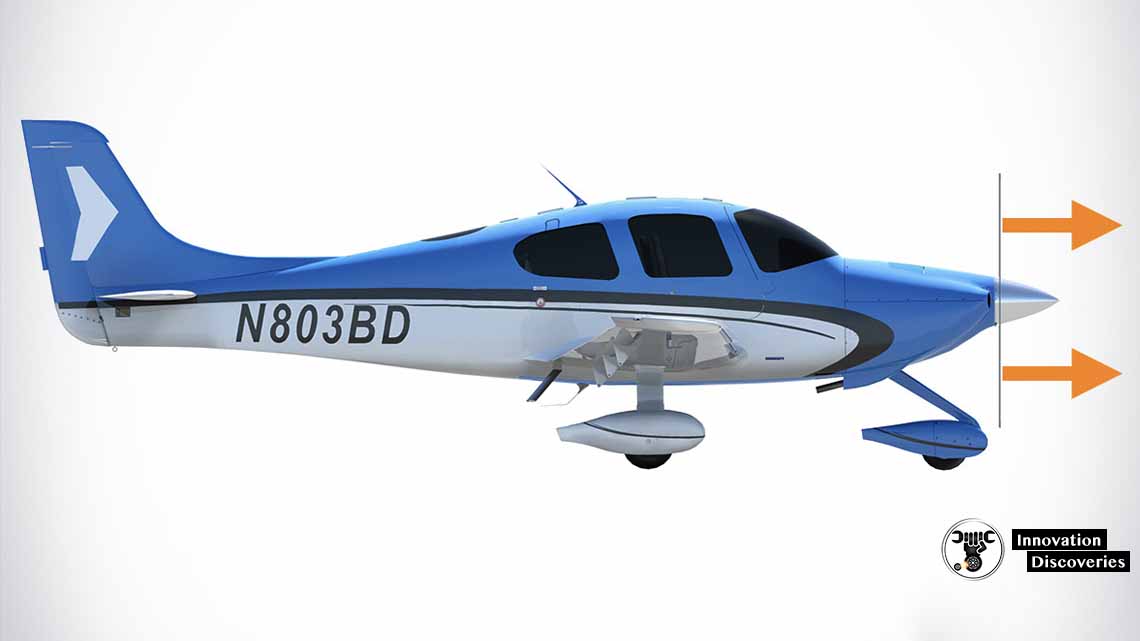
Just like wings, propellers have camber and chord lines,
In addition to leading and trailing edges. If you look closely at a propeller,
You’ll also notice that the blade angle varies from root to tip.
As the propeller spins around the crankshaft, the speed of the prop blades is highest at the tip and slowest at the root. During one full rotation,
The tip of the blade has to travel a much further distance than the blade root,
All in the same amount of time. That’s why the blade angle is greatest at the root, and the least at the tip. By “twisting” the blade, you get a relatively uniform angle of attack across the entire propeller blade.
If the blade angle was uniform across the prop, thrust and pressure would have wide variations from root to tip. There could be a negative angle of attack at the root, and blade stall at the tip. This is why varying blade angle plays such an important role,
To prevent a large angle-of-attack and pressure differences across the blade.
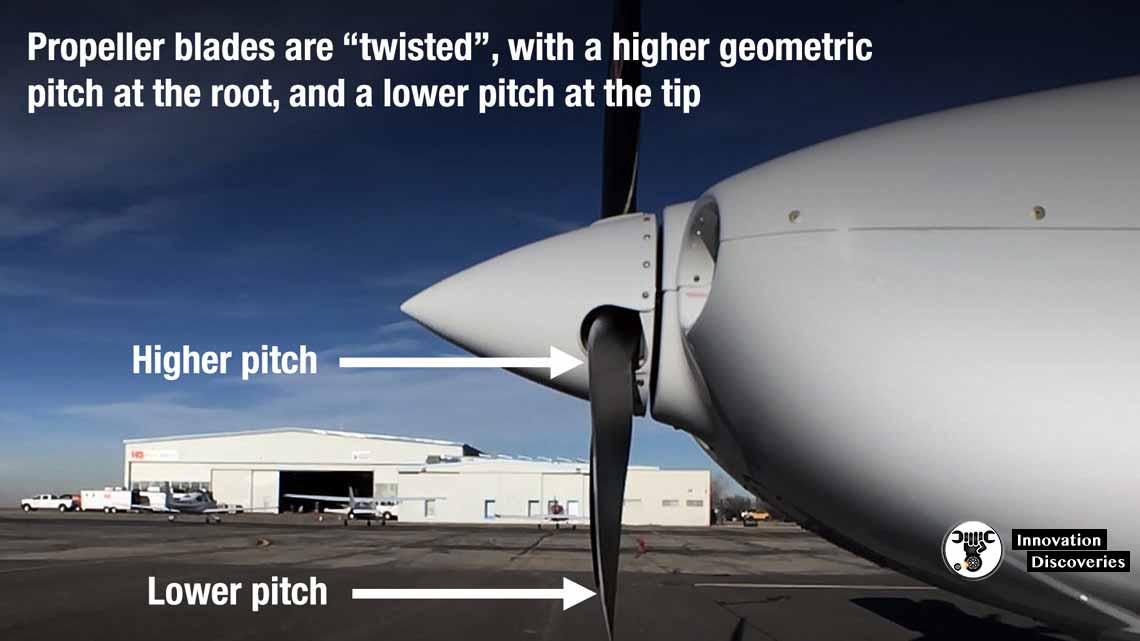
Props Create Pressure Differential
The simple purpose of a propellor is to convert the engine’s
Brake horsepower into thrust.
Just like wings, propellers accelerate airflow over their cambered surfaces.
The high velocity of the air results in lower static pressure in front of the propeller,
Pulling the airfoil forward.
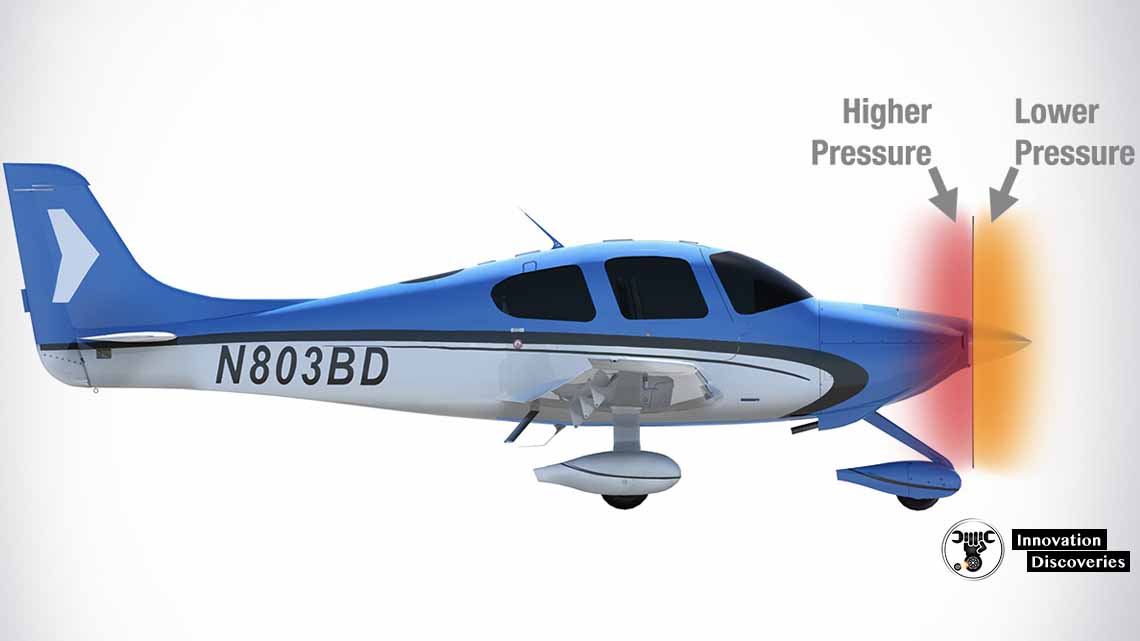
What About Acceleration?
To accelerate an airplane, thrust must be greater than drag. By increasing engine power and propeller revolutions (RPM),
Air is increasingly accelerated across the blades,
Creating a stronger pressure differential, pulling the airplane forward. This accelerates the airplane but is limited by thrust available. When you’re flying faster than L/D max,
More power is needed to compensate for increasing parasite drag. As you accelerate, drag load increases as well. Because of this, more power is required at higher airspeed for acceleration.
Propeller efficiency plays a large part in acceleration too.
At around the 80% efficiency point,
Any increase in forward airspeed results in a loss of propeller efficiency on fixed pitch propellers. This lack of efficiency at high airspeeds also decrease thrust and power available.
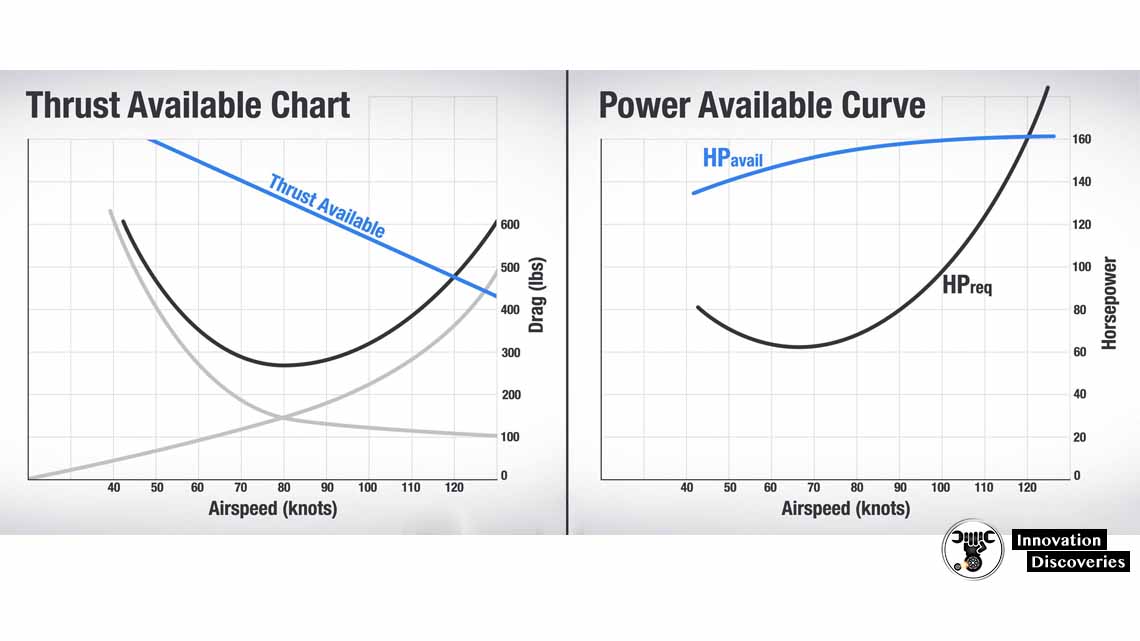
Propeller Diameter
In an ideal world, a variable-diameter propeller would be most efficient,
With a large diameter for low airspeeds and a smaller diameter for high airspeeds. Due to structural, control, and weight issues,
Variable diameter propellers just aren’t practical.
Instead, the diameter of most propellers is sized to allow for a
“Happy-medium” between slow and fast airspeed operations.
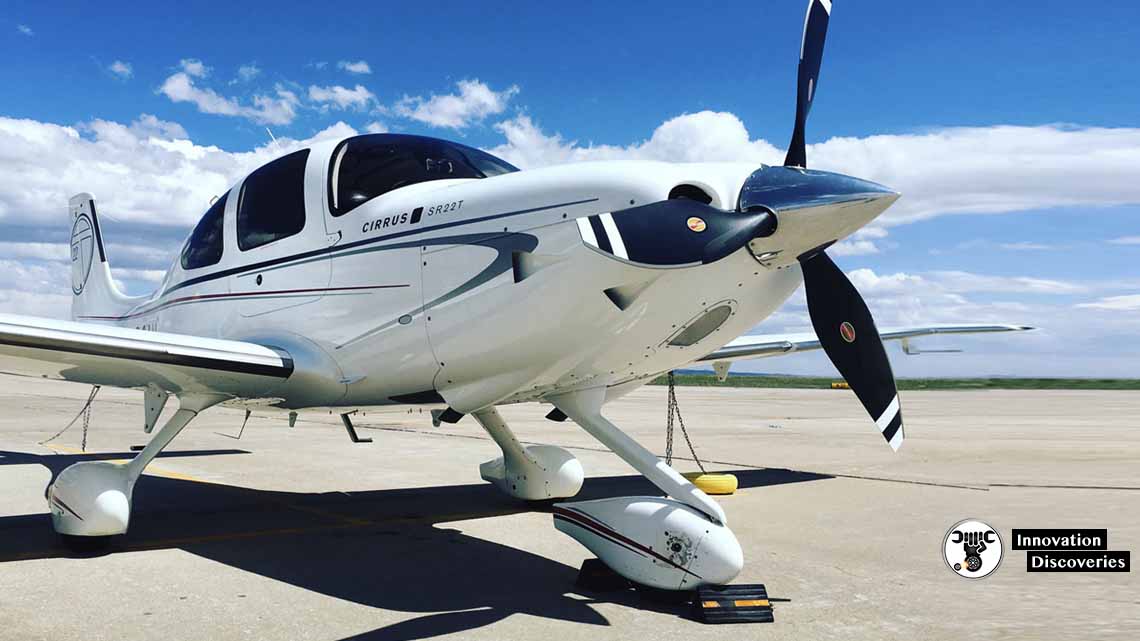
Putting It All Together
Propellers convert engine horsepower into thrust by accelerating air and
Creating a low-pressure differential in front of the propeller.
Since air naturally moves from high to low-pressure,
When your prop is spinning, you’re being pulled forward.
sources – bold method


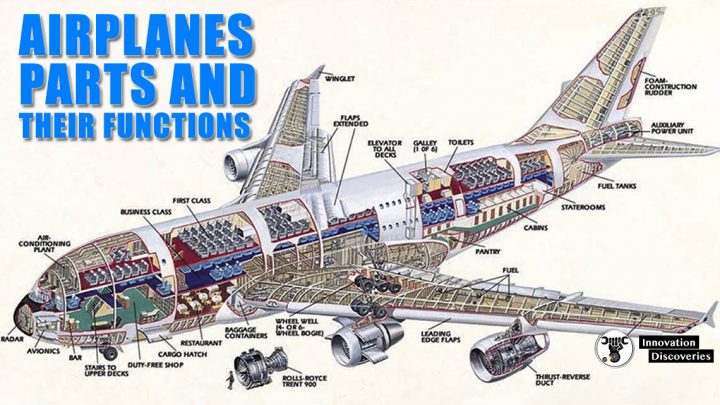
One Comment